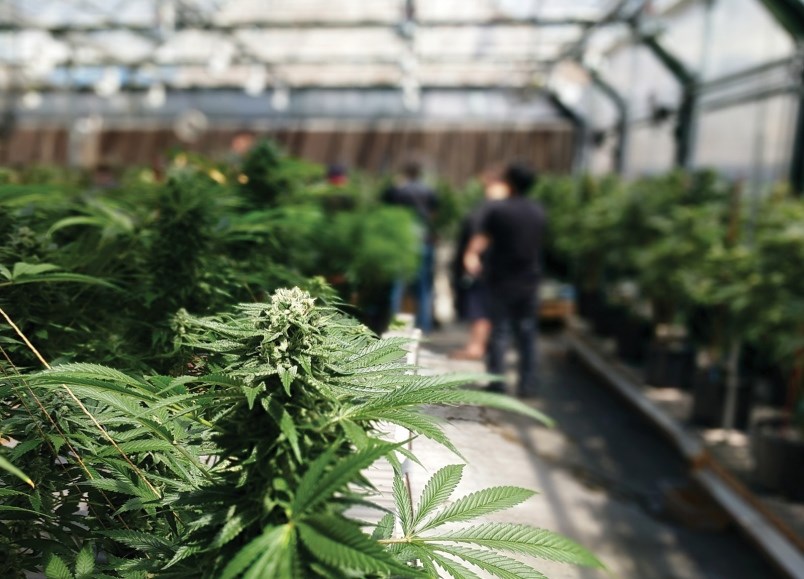The District of Sechelt’s second public hearing on a proposed cannabis zoning bylaw July 14 drew a slightly larger crowd than an earlier hearing, and elicited more comments about the details of zoning regulations.
The original version of the bylaw had to be re-drafted after the initial public hearing to clarify the buffer zones around schools for cannabis retail shops, when it was found the location of the Alternate School downtown hadn’t been taken into account. The new proposed buffer is 150 metres around schools, but only a 50 metre zone around the Alternate School on Inlet Avenue.
Planning staff said a larger buffer zone would eliminate most downtown locations.
Two of the speakers at the public hearing argued against a smaller buffer around the Alternate School and encouraged council to follow the recommendation of School District No. 46 that a 300 metre buffer be established around all schools.
The other aspect of the bylaw that drew comment were the regulations governing cannabis cultivation and production in the Agricultural Land Reserve (ALC). The Agricultural Land Commission has already designated cannabis as an agricultural commodity and established some rules, but local governments are able to impose restrictions on building sizes, setbacks, and minimum lot sizes. The Sechelt bylaw also proposes that cannabis growing on ALR land be “prohibited in a structure with a base consisting, in part or entirely, of any material that is not soil.”
Sechelt resident Chris Burrows said he felt the proposed restrictions in the ALR could harm efforts to transition small-scale growers out of the so-called grey market and into the legal cannabis framework. He also said it would make it difficult to pursue innovative ideas like a “grow park” or campus where several micro-producers could co-locate on a single property.
Gerald Belanger, a cannabis industry professional from Toronto, told councillors that allowing cannabis production in closed buildings or hard floor greenhouses could unlock the economic potential in ALR land that’s not well suited for other types of agriculture. “Using it for something is better than using it for nothing, I think that fits well with the true purpose of the ALR,” Belanger said.
Another issue raised at the hearing was water consumption, in particular if cannabis growers are operating in buildings, which could exempt them from watering restrictions that typically apply to outdoor watering.
Speaker Pam Jackson said, “ALR land should be there to grow food, not subdivisions and not greenhouses for dope.”
Jeri Patterson, who has a farm in West Sechelt, told councillors “If I’m restricted in what I can do as far as food production, local food production… how in the world are we going to support more larges-scale cannabis production – where is the water coming from?”
When the new bylaw passed first reading on July 3 mayor Darnelda Siegers said delays with the bylaw, and the “moving target” of provincial and federal rules, have forced the district to put responses to referrals on licence applications from three existing retailers on hold.
“One of the issues we have in the community is that our retail establishments, in order for them to get licensed, we have to have a bylaw in place so that we can respond to the referrals from the province,” Siegers said.
The bylaw could come back to council for consideration of second reading early next month.



